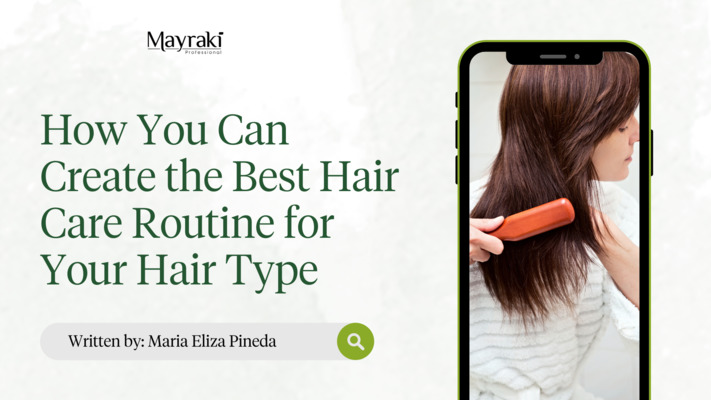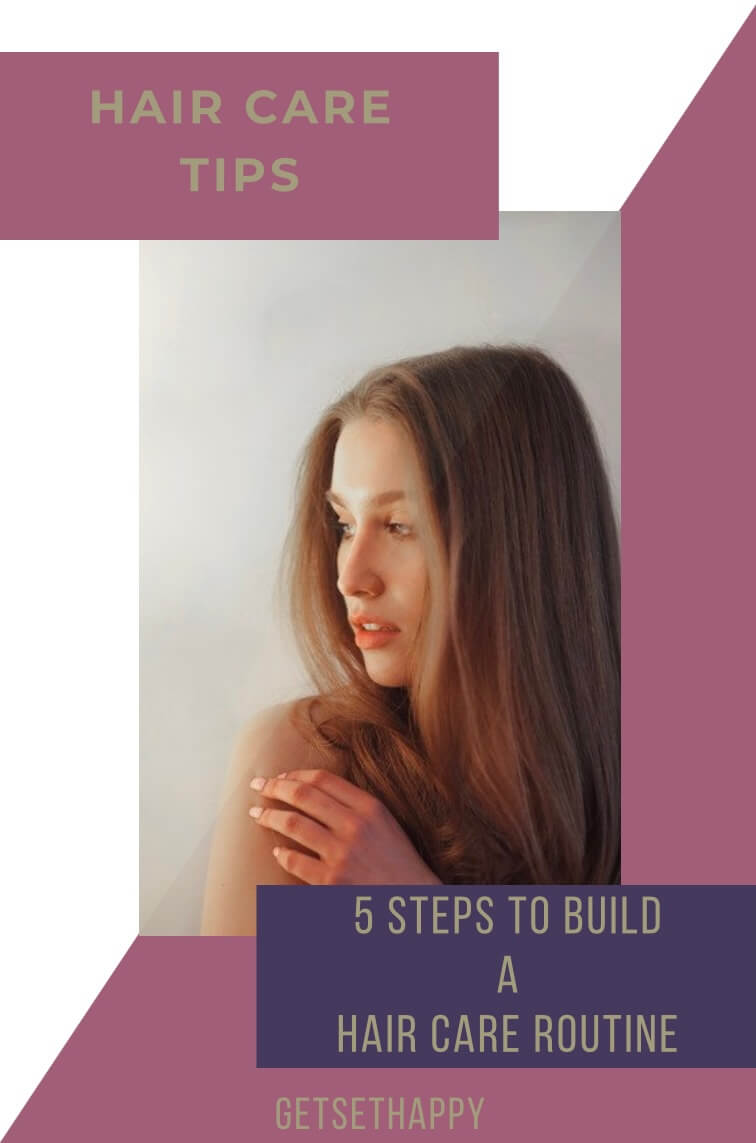How to Build a Hair Care Routine for Your Hair Type
Finding the perfect hair care routine can feel like searching for a needle in a haystack. With countless products and conflicting advice, it’s easy to get overwhelmed. But don’t despair! At hairy.cartlab.web.id, we believe everyone deserves healthy, beautiful hair. This comprehensive guide will walk you through the process of building a personalized hair care routine tailored to your specific hair type, helping you achieve your hair goals. We’ll cover everything from understanding your hair type to choosing the right products and techniques. By following these steps, you’ll be well on your way to luscious locks.
Understanding your hair’s unique needs is the cornerstone of creating an effective routine. Ignoring your hair’s texture, porosity, and density can lead to frustration and even damage. This guide will empower you to identify your hair’s characteristics and select products that work in harmony with its natural state. Remember, consistency is key – a well-crafted routine, followed diligently, will yield the best results.
This detailed approach will not only improve your hair’s health but also save you time and money in the long run, eliminating the need for constant experimentation with ineffective products. Let’s dive in and unlock the secret to your healthiest, most vibrant hair yet!

1. Identifying Your Hair Type: The Foundation of Your Routine

Before you even think about shampoos and conditioners, you need to understand your hair type. This isn’t just about straight, wavy, curly, or coily; it’s about the finer details. Consider these factors:
- Texture: Is your hair fine, medium, or coarse? Fine hair is delicate and prone to breakage, while coarse hair is thicker and can withstand more manipulation. Medium hair falls somewhere in between.
- Porosity: This refers to your hair’s ability to absorb and retain moisture. High porosity hair absorbs moisture quickly but also loses it quickly, leading to dryness. Low porosity hair struggles to absorb moisture, often appearing oily. Normal porosity hair absorbs and retains moisture at a healthy rate. You can test your porosity by performing a strand test: place a single strand of hair in a glass of water. If it sinks quickly, you have high porosity; if it floats, you have low porosity; if it sinks slowly, you have normal porosity.
- Density: This refers to the number of hair strands you have per square inch of your scalp. High density means you have a lot of hair, while low density means you have less. Density affects how long it takes your hair to dry and how much product you need.
- Scalp type: Do you have a dry, oily, or normal scalp? This is crucial because your scalp’s condition directly impacts your hair’s health. An oily scalp can lead to greasy hair, while a dry scalp can cause dandruff and itching.
Once you’ve accurately identified these aspects of your hair, you can move on to choosing products that address your specific needs.
2. Choosing the Right Shampoo and Conditioner

The shampoo and conditioner you choose are the cornerstones of your hair care routine. Avoid harsh sulfates and silicones, which can strip your hair of its natural oils and lead to dryness and damage. Opt for sulfate-free and silicone-free options, especially if you have dry, damaged, or color-treated hair.
- Shampoo: Select a shampoo that addresses your scalp type and hair concerns. For example, if you have an oily scalp, choose a clarifying shampoo to remove excess oil. If you have dry hair, opt for a moisturizing shampoo. If you have color-treated hair, choose a color-safe shampoo to prevent fading.
- Conditioner: Conditioner is essential for detangling, smoothing, and adding moisture to your hair. Choose a conditioner that complements your shampoo and addresses your hair’s specific needs. Deep conditioners are excellent for treating dry, damaged hair, while leave-in conditioners offer added hydration and protection. Consider using a hair mask once a week for extra nourishment.
Remember to apply shampoo to your scalp and conditioner to the lengths of your hair, avoiding the roots to prevent excess oiliness.
3. Incorporating Styling Products and Treatments

Styling products can enhance your hair’s appearance and help you achieve your desired look. However, choose wisely! Overusing styling products can lead to build-up and damage.
- Leave-in conditioner: As mentioned before, this adds extra hydration and makes detangling easier.
- Hair oil: Hair oils, such as argan oil or coconut oil, can nourish and moisturize your hair, reducing frizz and adding shine. Apply a small amount to the ends of your hair to avoid weighing it down.
- Heat protectant: If you use heat styling tools, a heat protectant spray is essential to prevent damage.
- Hair masks: These intensive treatments provide deep hydration and repair. Use them once a week or as needed.
For those with short hair looking for volume, check out our article on “Tips to Style Short Hair for Volume” at [hairy.cartlab.web.id/tips-to-style-short-hair-for-volume].
4. Washing and Drying Techniques for Optimal Hair Health

How you wash and dry your hair significantly impacts its health.
- Washing frequency: The ideal washing frequency depends on your scalp type. Oily scalps may need daily washing, while dry scalps may only need washing every few days. Experiment to find what works best for you.
- Water temperature: Use lukewarm water to wash your hair. Hot water can strip your hair of its natural oils and lead to dryness.
- Drying techniques: Avoid harsh towel-drying, which can lead to breakage. Gently squeeze out excess water and let your hair air dry whenever possible. If you use a hairdryer, use a low heat setting and keep it moving to prevent heat damage.
5. Maintaining Your Hair Care Routine and Addressing Challenges

Consistency is crucial for achieving and maintaining healthy hair. Sticking to your routine will yield the best results over time. However, be prepared to adjust your routine as your hair’s needs change with the seasons or due to other factors.
- Seasonal adjustments: During the winter months, your hair may become drier due to cold weather and low humidity. You may need to increase the frequency of deep conditioning treatments. In the summer, increased humidity can lead to frizz; you might need to use more anti-frizz products.
- Addressing challenges: If you experience persistent hair problems, such as dandruff, breakage, or excessive dryness, consult a dermatologist or trichologist. They can help diagnose the underlying cause and recommend appropriate treatments. For inspiration on unique hair colors, consider reading our article on “Soft Pastel Hair Colors for a Dreamy Look” at [hairy.cartlab.web.id/soft-pastel-hair-colors-for-a-dreamy-look].
Remember, building a successful hair care routine is a journey, not a race. Be patient, listen to your hair, and adjust your routine as needed.
Conclusion
Building a personalized hair care routine tailored to your specific hair type is essential for achieving healthy, beautiful hair. By following the steps outlined in this guide, you’ll be well-equipped to identify your hair’s unique needs, select the right products, and develop a regimen that promotes optimal hair health. Remember to be patient and consistent – the rewards of healthy, vibrant hair are well worth the effort. For more information and inspiration, explore our resources on How to Build a Hair Care Routine for Your Hair Type. And if you’re planning a special occasion, don’t forget to check out our ideas for “Romantic Braided Wedding Hair for Outdoor Weddings” at [hairy.cartlab.web.id/romantic-braided-wedding-hair-for-outdoor-weddings].
(External Authority Links - Please replace these with actual relevant links):
- American Academy of Dermatology Association on hair care: [Insert Link Here]
- Article on hair porosity from a reputable beauty website: [Insert Link Here]
- Article on different hair types from a reputable hair care website: [Insert Link Here]






Comments